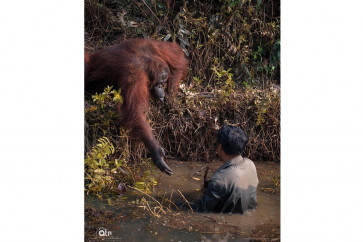Elephant population continues to decrease in Sumatra
Illegal hunting activities and conflict with local communities have been blamed for the continuous population decrease of elephants in Sumatra
Change Size

I
llegal hunting activities and conflict with local communities have been blamed for the continuous population decrease of elephants in Sumatra.
Wildlife Conservation Society (WCS) Indonesia reported that the current population of elephants in the island was no more than 1,000, a decrease of almost 69 percent over the last 25 years.
WCS' species conservation specialist Wulan Pusparini said the decreasing population of elephants has led to them being listed as endangered by the International Union for Conservation of Nature (IUCN).
'The population of the elephants is currently far below the population in 2007, which was 2,800,' Wulan told The Jakarta Post on Thursday.
She said areas that had been frequently used as illegal hunting grounds for Sumatran elephants include Riau, Aceh and North Sumatra.
'There are illegal hunting activities in those areas every week,' said Wulan.
She added that six out of the nine previous elephant habitats in the island no longer had a population because of the increasing illegal hunting.
Besides hunting, there have been many reports of conflict between elephants and residents, which is believed to have also contributed to their decline.
To get data about the elephant population, Wulan said that WCS Indonesia Program's researchers, together with the Eijkman Institute, had recently used DNA techniques.
The method, according to Wulan, had been applied at a number of sites including in Way Kambas National Park in Lampung and Bukit Tiga Puluh and Tesso Nilo National Parks, both in Riau.
'We are now using DNA research methods in South Bukit Barisan National Park,' Wulan said.
She added that the method involved grinding elephant dung and then putting it in a tube containing a special liquid called Queen's Buffer to preserve the DNA in the dung.
A test was then conducted to extract the DNA sample to estimate the elephant population, she said.
According to Wulan, with this process ' called the mark-recapture statistic approach, the dung could also be used to predict the distribution of ages and sexes of a population.
WCS' Sumatran elephant researcher Simon Hedges said that they had recently succeeded in calculating the population of Sumatran elephants in Way Kambas National Park using the DNA technique.
Simon said that of the 310 samples of elephant dung collected, they predicted that the elephant population in the park was 247.
Simon added that apart from identifying the elephant population, the DNA technique was also used to discover that the ratio between male and female elephants in Way Kambas was one in seven.
While the spread of their ages, was described as comprising 34 percent matured elephants, 43.7 percent young elephants and 22.3 percent of baby elephants, Simon said.
Through the DNA technique, scientists and conservation experts could design the right protection mechanism to save Sumatran elephants from extinction, he added.









